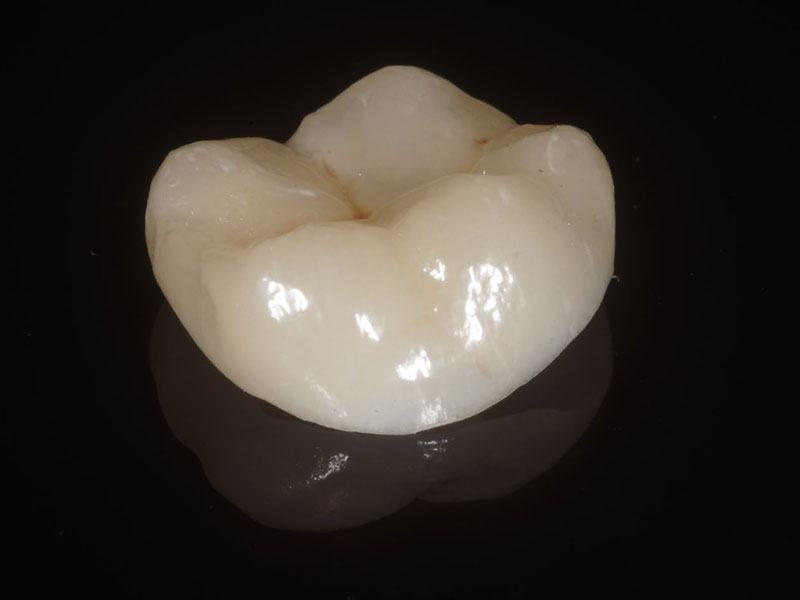Crowns and Bridges
Crowns are sometimes required to help protect a tooth that has become damaged or broken down. There are many benefits to crowns:
- protect a tooth that has a crack
- restore a tooth that has broken down
- improve the appearance of a tooth that is heavily discoloured, stained or has an unsightly filling
- provide support to a denture or a bridge
- prevent bacteria from reinfecting a tooth the has had root canal treatment and protect it from breaking under biting forces.

Crowns are made from a wide variety of materials, each with their relative pros and cons. We will go over your options available to you when we discuss providing a crown for you.
When preparing a tooth for a crown, we will reduce the height and width of the tooth slightly to allow the crown to fit onto the tooth and blend perfectly with your bite. After the preparation, a digital scan or impression is taken and sent to our expert technicians who will craft a bespoke crown just for you. This process often takes two weeks, so a temporary crown if often fitted for you to have between the appointments.
Bridges are like crowns, but are used to restore spaces of one or more missing teeth. The teeth either side of the gap are prepared for crowns in the same way and a bridge is constructed connecting the crowns, therefore improving the appearance and biting function.
Inlays and Onlays
Inlays and onlays are two types of restorations that your dentist may suggest if you have decayed or damaged your tooth.
These are restorations which are indirect meaning that they are made outside the mouth, usually by a highly skilled laboratory technician.
Inlays are made to fit the specific size and shape of a cavity whereas onlays are made to fit not only the cavity but will also cover some or all of the biting surface of the surrounding natural tooth, the cusps. Inlays and onlays are custom designed for you by preparing the tooth and taking an impression or digital scan which can then be used to create your restoration.
Porcelain is the most popular choice of material for your inlay or onlay restoration but they can also be made using gold or composite resin. Once made they are bonded into place and will help in prolonging the lifespan of your tooth.

